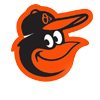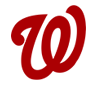PLAYER REVIEW: ANDREW ALVAREZ
Age on Opening Day 2026: 26
How acquired: 12th-round pick, 2021 MLB Draft
MLB service time: 28 days
2025 salary: $760,000
Contract status: Under club control, arbitration-eligible in 2029, free agent in 2032
2025 stats: 1-1, 2.31 ERA, 5 G, 5 GS, 23 1/3 IP, 16 H, 8 R, 6 ER, 1 HR, 10 BB, 20 SO, 1 HBP, 1.114 WHIP, 180 ERA+, 3.39 FIP, 0.7 bWAR, 0.6 fWAR
Quotable: “I’m super thankful for the Nationals organization and the front office for giving me an opportunity and a chance up here. I’m just super grateful.” – Andrew Alvarez
2025 analysis: The organization’s Minor League Pitcher of the Year in 2023, Alvarez had long been on the Nationals’ radar, though he had never truly been considered one of their top prospects, with solid numbers at Double-A but not yet at Triple-A. He opened the season at Rochester and through his first 19 starts was 0-7 with a 4.66 ERA and 1.457 WHIP, hardly the kind of numbers that put him on the cusp of the big leagues.
Alvarez did start to figure things out in August, though. Over a six-outing stretch, he went 3-0 with a 2.37 ERA and saw his strikeout rate rise to 39 in 30 1/3 innings. And when the Nats had to place MacKenzie Gore on the 15-day injured list with left shoulder inflammation, they found themselves in need of at least a temporary replacement and decided to give the young left-hander a shot.
Alvarez took the ball and ran with it in a way few could have foreseen. He tossed five scoreless innings of one-hit ball in his Sept. 1 debut against the Marlins, then held the playoff-bound Cubs to two runs at Wrigley Field in his second career start. He had one hiccup against the Mets (six runs, four earned in only 3 1/3 innings) but did not allow a run in either start surrounding that one, holding down both the Pirates and Braves. He wound up making five starts in the majors, exceeding expectations in all but one of them.
2026 outlook: Based purely on the stats, Alvarez was one of the most effective pitchers on the Nationals staff this season. Of course, that’s based on an extremely small sample of five starts, and it’s not like he arrived with the pedigree of a future major league ace. So, how do they figure out if what they saw was legitimate and potentially sustainable over the long haul?
First and foremost, the Nats should look at what made Alvarez successful in those five starts. He doesn’t have overpowering stuff, with a fastball that averages 91.2 mph and a modest strikeout rate of 7.7 per nine innings. He didn’t get a lot of swings and misses overall (22.2 percent, below the major league average of 25 percent).
What Alvarez did get was a lot of weak contact, especially on the ground. His 58.2 percent groundball rate was way above the league average of 44.2 percent (again, in a very limited sample). Opponents “barreled” only three percent of the balls they put in play against him (major league average: 7.2 percent). They hit just .200 off his fastball and a miniscule .091 with zero extra-base hits off his slider.
So that’s Alvarez’s potential path to success in the big leagues: Keep inducing weak contact, preferably on the ground. It’s not a failsafe plan, of course, and it requires pinpoint command. But he also showed impressive poise given his lack of experience, pitching his way out of the few jams he did encounter. Maybe it was all a mirage and just another example of a hot September from an unknown arm. But given the state of the Nationals’ overall pitching depth, they have no reason not to give him a real look next spring and be open to the idea of him making their rotation.




-1745819772711.png)

